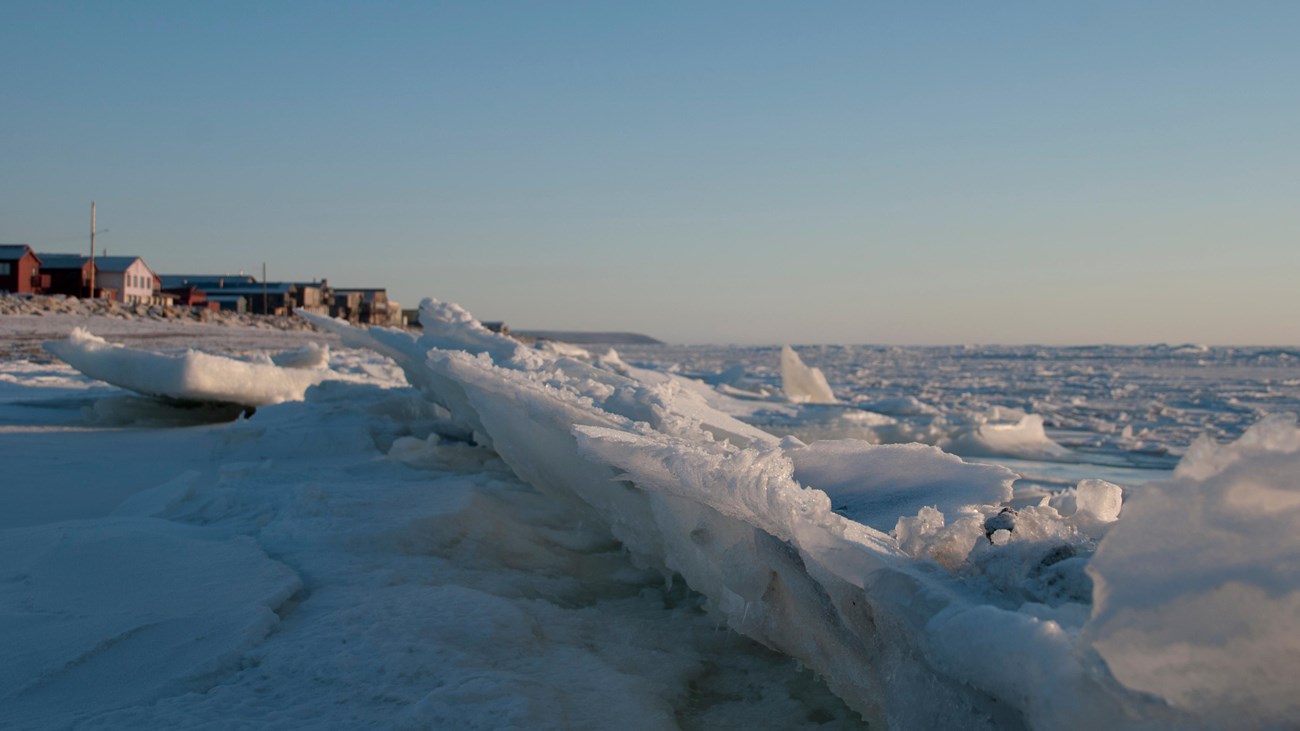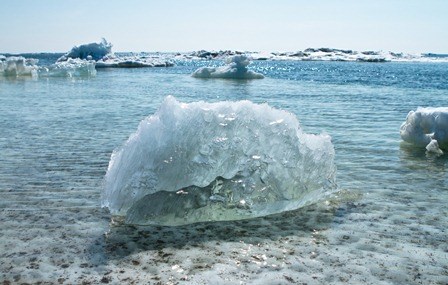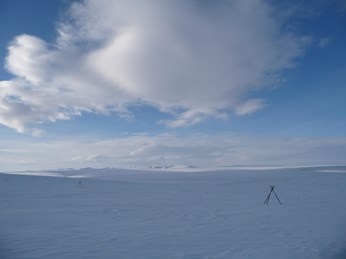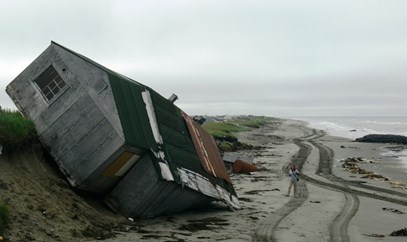
Conversations About Change
We invite you to explore stories about climate change through interviews with local residents in Nome and Skagway, Alaska. 
NPS Photo According the Intergovernmental Panel on Climate Change (IPCC), average temperatures are increasing at twice the rate in the arctic as they are in the rest of the world. For the national park units in the Arctic Network, including Bering Land Bridge National Preserve, it is predicted that the temperature may rise 10o F in less than 70 years. Warmer winters, more rain, and decreased evaporation rates, will result in drastic effects on the region's landscapes and waterways. On the shoreline, these effects can be observed in the coastal erosion that is occurring more rapidly than normal, due to the thawing and collapsing of once-frozen sediments, in some areas displacing entire villages. Further out in the northern oceans, sea ice is forming later each season and melting earlier. This directly leads to a reduction of albedo, which is the proportion of sunlight reflected off a surface (in this case, ice). To better understand albedo, first imagine wearing a black T-shirt on a hot, sunny day. The dark color absorbs the heat, making the fabric feel hot on your skin. If you were to wear a white T-shirt instead, the light color would reflect the sunlight away and you'd feel much cooler. 
NPS Photo Well, the surface of the earth works the same way! Light colored surfaces such as clouds, ice, snow, and lighter sand have a higher albedo and are more reflective. Darker colored surfaces such as forests, asphalt pavement, smoke clouds, rooftops, dark soil, and sometimes water, have lower albedo that absorbs heat into the earth. Thus, as more solar radiation is absorbed rather than reflected away by sea ice, it creates a feedback loop of continual warming, melting, and heat absorption. This feedback loop has already been observed in some areas through the process of forest invasion. Although we typically think of forest as a good thing, the intrusion of trees on the tundra can have detrimental effects. Forests reduce solar reflectivity, creating a wetter environment that is less conducive to healthy forest fires, and essentially uprooting the entire tundra ecosystem, preventing further seasonal ice coverage. What does this mean for arctic wildlife? Longer warm periods each year have been found to change the migration and seasonal ranges of birds, mammals, and insects. Studies are also finding an increase in body size and abundance of some tundra species, including the arctic wolf spider and the masked shrew, and there is a trend towards many species spending more time in northern latitudes. In addition, the acidification of the ocean can stunt the development of shells and calcium-carbonate skeletons of arctic marine species. Regardless of the science or reasons behind climate change, residents of Northwest Alaska are often the first to affirm that its effects are intensified in the polar regions of the planet. To better understand climate change, local knowledge can be one of our greatest assets. Watch the short film Local Perspectives on Climate Change to hear about one resident's experience with the environmental changes he has seen in his lifetime and how it has impacted his subsistence lifestyle on the Seward Peninsula. 
NPS Photo In the Native Village of Shishmaref, the younger generation is being affected by climate change as well. In fact, within the next several decades, the entire community will be moving inland as erosion eats away at the small island on which the village is situated. With a population of about 563 and over 50% youth, this transition has the potential to not only affect traditional subsistence lifestyles but also cultural practices that have been passed down for centuries. To better understand what this means for the community, the National Park Service interviewed several youth from Shishmaref. Click here to view Zander's interview and here to view Renee's, as they talk about how they expect their lives to change with the impending relocation to the mainland. |
Last updated: June 15, 2023
